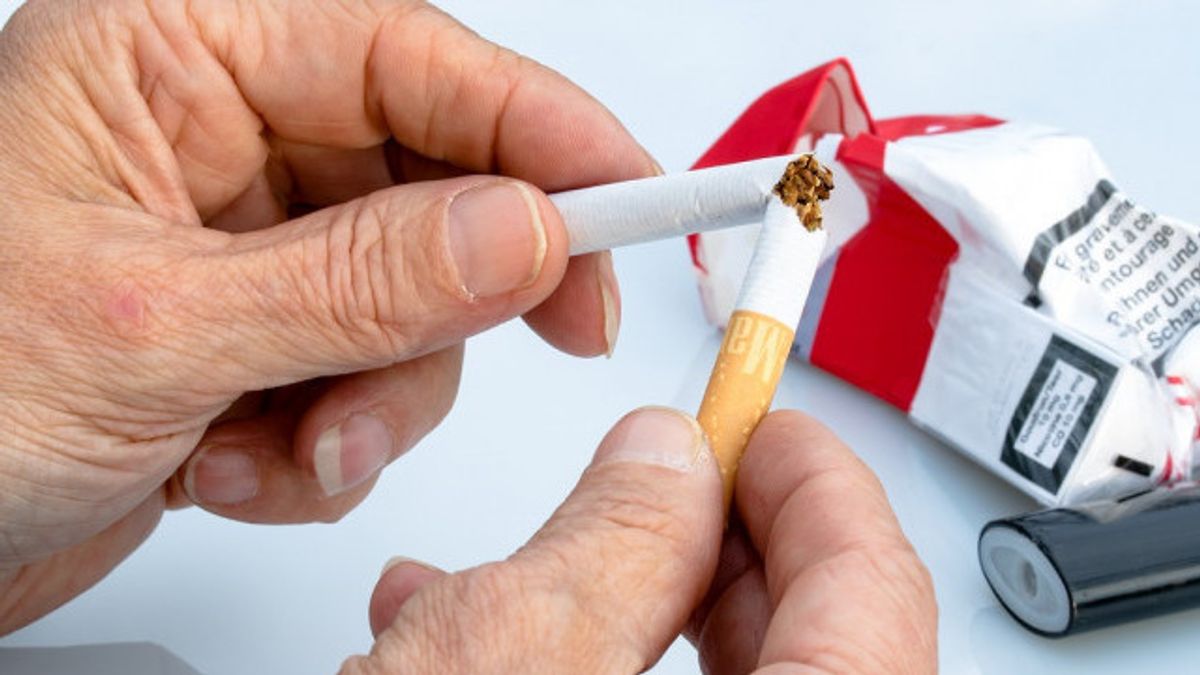JAKARTA - In recent years, public awareness regarding the dangers of conventional cigarettes has increased, thus giving rise to the desire of smokers to completely quit or at least switch to alternative ways that are lower risk.
Launching The Global State of Tobacco Harm Reduction (GSTHR) report titled No fire, No smoke: The Global State of Tobacco Harm Reduction 2018 on Friday, shows that the consumption of alternative tobacco products can actually reduce the consumption of conventional cigarettes.
Research by Public Health England (2015) also explained that alternative tobacco products appear to have a 95 percent lower risk compared to conventional cigarettes.
The report, raised examples of the success of several countries. In Japan in the 2017-2019 period, heated tobacco products have succeeded in reducing smoking rates by 27 percent. Meanwhile in Sweden the use of "snus" has also reduced the incidence of dangerous smoking-related diseases, making it the lowest in the European Union.
A study entitled Snus Cessation Patterns- a Long Term Follow Up of Snus Users in Sweden in 2020 concluded that 80 percent of respondents succeeded in quitting conventional smoking with this method. Then in Norway, the use of snus was also recorded to have succeeded in reducing the number of smokers by 10 percent from 2008 to 2017. In the UK the number of smokers was recorded to have decreased by five percent during 2011-2017 thanks to the switch to e-cigarettes.
This achievement is supported by the attitude of the British Government which strongly supports the presence of alternative tobacco products, especially since the UK Department of Social and Health launched the Tobacco Control Plan in 2017.
The Tobacco Control Plan is a long-term strategy designed by the UK Government to comprehensively reduce the consumption of conventional cigarettes. Starting from the consumption chain aspect, fiscal policy, to rehabilitation.
One implementation of this strategy is the opening of two vape shops in hospitals by the National Health Service (NHS). This policy was carried out because alternative tobacco products were considered more effective in reducing the number of smokers than medical treatment.This progressive step by the British Government shows that the UK has realized that alternative tobacco products have great potential for public health. And this is proven because it has been widely applied in a number of countries. This positive example also needs to be imitated by other countries, including Indonesia.
However, how exactly do alternative tobacco products travel? The following is a brief description as reported by Antara, Monday, September 20.
A symbol of nobility as well as resistanceInitially, tobacco consumption had become a symbol of social status for European aristocrats in the early 16th century, thanks to the efforts of Jean Nicot de Villemain, diplomat of the French Empire under King Henry II's empire who brought tobacco to France from Portugal after serving there. His name was later immortalized as the name of the substance contained in tobacco, namely nicotine.
Tobacco consumption grew in popularity when Jean Nicot gave a snuff, ground tobacco consumed through the nose, to Queen Catherine de'Medicici, wife of King Henry II. Queen Catherine said she was satisfied with it and then crowned tobacco as the "Queen of Herbs" at that time.
From there began the fame of snuff among the French nobility which then spread among European nobility, especially in mainland Scandinavia such as Sweden and Norway.
In Sweden, snuff is modified by adding salt and sodium carbonate and flavoring. The product was known as snus and later became one of the oldest non-smoking tobacco products that still exist today.
Moving to Indonesia, the history of tobacco in the archipelago can be seen from the story of Roro Mendut who used cigarettes as a tool to avoid forced marriage with Tumenggung Wiraguna, the Mataram War Commander, due to losing the war.
Roro Mendut's rejection of the marriage resulted in him being sentenced to pay a high-value tribute. To deal with this, he then sold cigarettes around the Mataram area. Unexpectedly, the merchandise sold well so that Roro Mendut had no difficulty in paying the tribute sentence imposed on him.
Economic valueThe story of Roro Mendut also represents the high economic value that tobacco has had since ancient times, not only in Indonesia but also throughout the world.
In America, during the civil war of 1776, President George Washington had called for raising war funds through tobacco, not money.
"Brown Gold" aka tobacco has become one of the most valuable global commodities since Christopher Columbus discovered it in the 15th century in America. Tobacco even had time to become a medium of exchange with high value, just like gold and money at that time.
Even now, tobacco has a high commercial value. This is proven because in 2019 the value of the world tobacco industry reached 818 billion US dollars. Of this value, the alternative tobacco industry through heated tobacco products, e-cigarettes, snus, and others managed to contribute more than 35 billion US dollars.
The English, Chinese, Japanese, Arabic, and French versions are automatically generated by the AI. So there may still be inaccuracies in translating, please always see Indonesian as our main language. (system supported by DigitalSiber.id)













